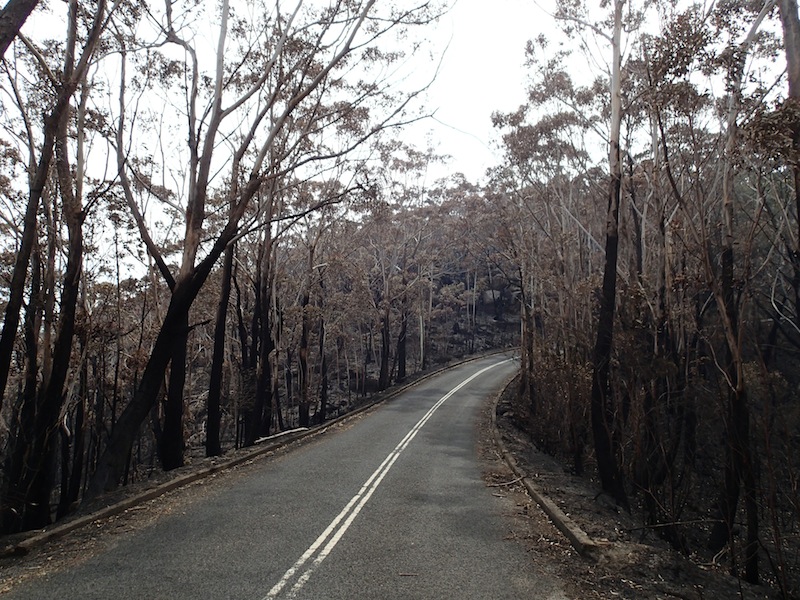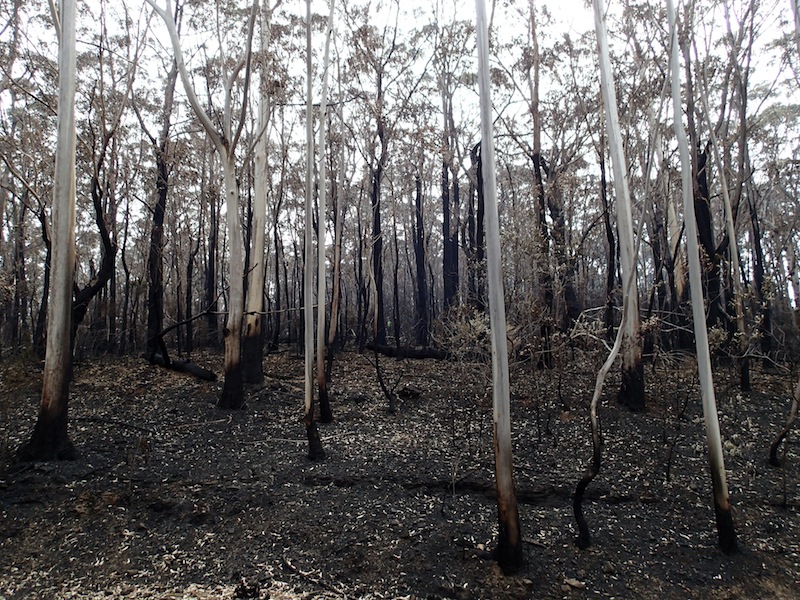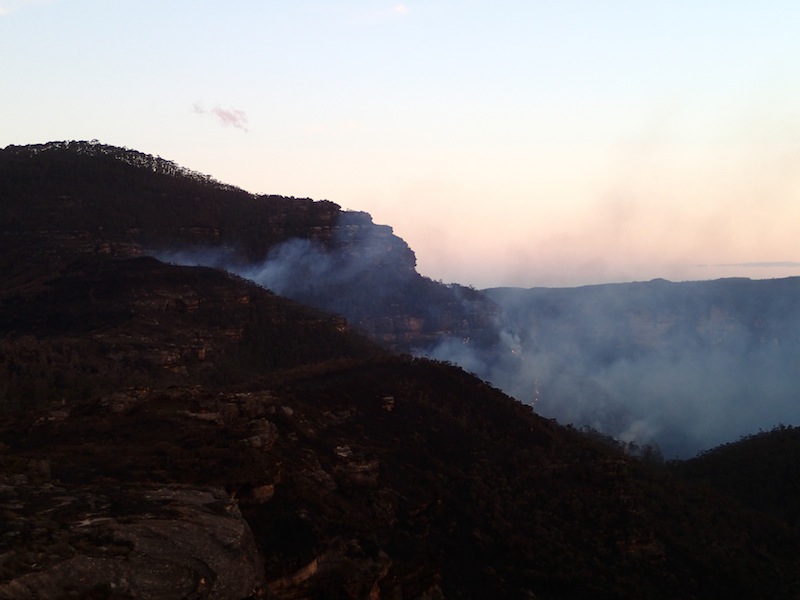After a failed attempt to get to Mt Wilson to help with the bushfire cleanup — when a bout of windy weather saw a spot fire leap Bells Line of Road into Bowens Creek, briefly threatening to burn towards Mt Wilson for the second time in just over a week — I finally managed to make my way in on Saturday.
The fires that raged through much of the Blue Mountains, destroying more than 200 houses and threatening countless more, had kept Peter Raines (long-time canyoner and SUBW member) on the fire-ground for 11 days straight, so he’d had no time to worry about his own property. Even when Hossein and I arrived, Pete was out at Mt Irvine working with five water-bombing helicopters that were trying to fully contain the fire as it continued to burn through Wollemi National Park.
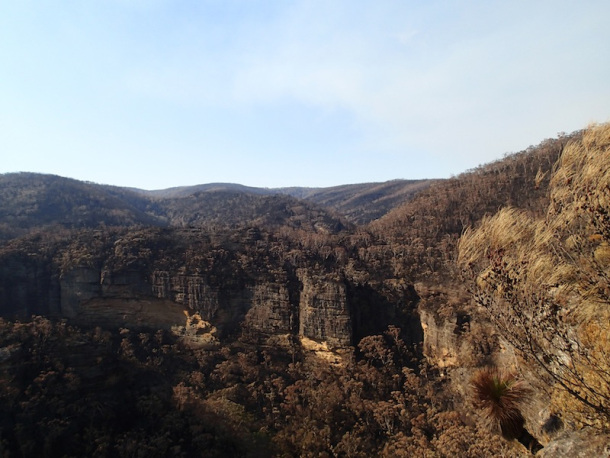
We nearly hadn’t made it in, with road closures still in place, but thanks to some strategically placed RFS gear sprawled across the back seat of the car and some smooth talking at the road block we were through. Even then they told us that due to ongoing backburning operations we might not get past Mt Tomah. On the way home we passed two police roadblocks in that area, and they weren’t letting anyone through, so we got rather lucky with our timing.
When we got up there, Pete explained that the main fire front had miraculously raced across just north of Mt Wilson, and only claimed two houses in Mt Irvine. Had the wind been blowing a tiny bit further south it would have been much worse for them. On Pete’s property, the fire had licked at his shed, burnt through newly planted fruit trees, and scorched the walls of a neighbours house, causing minor damage. Another direct neighbour had lost a shed and a water tank.

We spent the day doing what Pete simply hadn’t had time to do in the last week and a half: watering the affected trees, gardens and other plants to save as many as possible. On the neighbours land, a beautiful grove of newly planted tree ferns had been toasted, so we gave them a good soak too. Hopefully the 5,000 litres or so of water we carted up the road makes a difference and some of the plants survive.
Late in the afternoon Pete took us for a quick tour of some of the fire affected areas nearby. We drove out the freshly-graded Boronia Point Fire Trail, which provides one of the few spots where a view directly into the Wollangambe River is possible.
We looked across at the ridge where the exit track from Wollangambe Two runs. The fire had clearly hit it hard, with no leaves left on the tall gums, leaving them with the appearance of a line of black toothpicks standing in a row.

Down below us, the fire had burnt right into the gorge, with only the plants either in the water, or right on the waters edge, still green. That included parts of the ‘Gambe that were protected from the full force of the fire by a large rocky ridge. Higher up the river, where the worst of the fire burnt, I assume everything above the water gums has been blackened.
I’d walked out the Boronia Point fire trail earlier in the year, and along the way there were sections of thick scrub, others that were basically rainforest, and parts that were more open forest. Now it all looks alike. The under-storey is completely gone. The only sign of the rainforest sections are the scorched tree ferns.
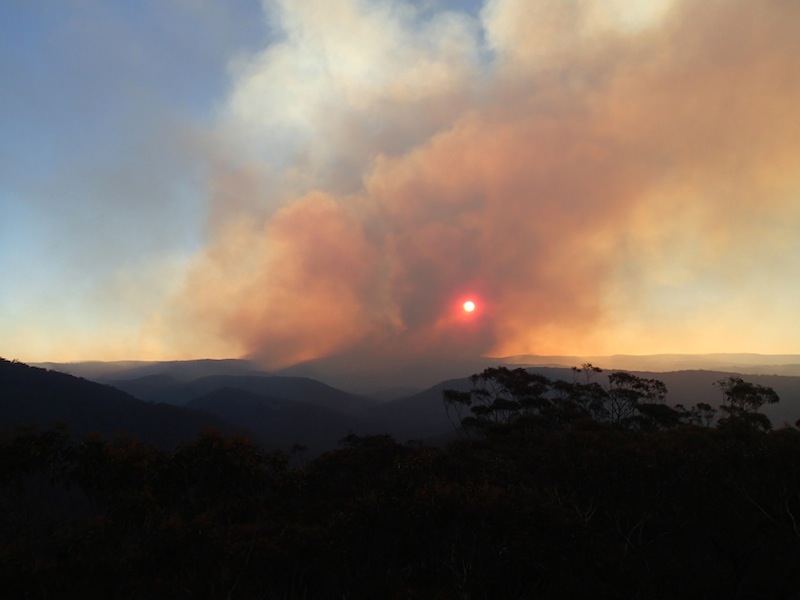
One of the few positives was seeing the fire-loving native plants in action. Their seed pods have all opened, their seed spread out, and hopefully some rain soon will see them germinating and restoring themselves.
The soil, whether the rich basalt country high up, or the loose sandy stuff lower down the slopes, is all completely exposed. With some wind, much of the top soil will blow away, while the summer storms will likely see massive erosion and huge amounts of sediment washing into the river below.
The only other thing that had clearly bred were the flies. There were millions of them, apparently unscathed by the fire, and very interested in us.

Before leaving town Hossein and I also decided to pop out to Du Faur Rocks to examine the higher sections of the ‘Gambe. The initial view from here was a little more positive — much of the bush further south burnt either at night or in less-intense backburns, so there was still some green in the trees. But looking north, over the Wollangambe One entry track, everything was scorched. Ridge after ridge was completely brown and black, as far as we could see.
On the horizon, smoke still plumed from the ongoing backburns in the Grose Valley, where the RFS are attempting to burn out the last remaining sections of bush within the containment lines.

Leaving town, right on dusk, we thought we’d try and see if we could make it to Mt Victoria, to get a first-person look at a bit more of the impact of the fires. We only made it about half-way to Bell before we could see one of the burns coming up close to the road. We figured that was as far as we were getting, and turned around.
Heading back down the mountains, patches of fire and billowing smoke could still be seen coming from the Grose Valley, with the fire active as far east as the walls of Mt Banks.

Canyons impacted by the bushfires:
With the fires in the mountains now pretty well contained, and unlikely to spread beyond their current boundaries (it’s only some green bits within the containment lines that are still smouldering away), I figured it is worth doing a quick assessment of the canyons that have been impacted.
These areas will likely remain shut for some time, probably this whole canyoning season. I’ll also provide an update once the National Parks and Wildlife Service makes a final decision about longer-term park closures.

The hardest hit area has obviously been around the Wollangambe River. The most intense fire burnt directly through this region. Every single canyon flowing into the ‘Gambe is burnt, along with tributaries like Bell Creek and Du Faur Creek.
In the north, Yarramun Creek, Dumbano Creek, and Bungleboori Creek have all been burnt (including their tributary canyons). Most of Waratah Ridge has burnt. It appears the north branch of the ‘Boori (also known as Dingo Creek) is as far as the fire got. Any canyon north of here, or on the north side of this creek, should be untouched. Unfortunately, I’d still say closures of these canyons are likely.
The fire did cross the ‘Boori lower down, near the junction with Yarramun Creek. This part of the fire has burnt as far north as Rain Creek. A small bulldozer was airlifted onto this lower section of Railmotor Ridge to cut a containment line to stop the fire spreading further.

Further east, the fire seems to have stopped at Nayook Creek and then the lower parts of the Wollangambe. It also burnt through lower Bowens Creek, then well to the east, beyond canyon country. Despite burning the lower section of Bowens, and a spot fire in the upper section, the canyons in the north and south branches of Bowens Creek appear to be unburnt. They will hopefully reopen sooner than the other nearby canyons.
On the south side, the Mt Victoria fire burnt Hat Hill Canyon and Crayfish Creek near Blackheath. On the north side of the Grose, all of the canyons west of Mt Banks are within the containment lines, and have either burnt or are being burnt as part of the ongoing backburning operations.

Dargans Creek is obviously burnt, but not being in National Park it may reopen sooner.
The positive news is that the fire didn’t reach the Carmarthen canyons. That means Claustral, Thunder, Ranon, and less-visited ones like King George Brook and Buramin Canyon should all be fine. Likewise, anything north of Deep Pass is unburnt, so there are still some cracking canyons on the Newnes Plateau that can be visited once the roads (and parks) reopen. Similarly Sunnyside Ridge is fine.
Of course Grand, Jugglers, Fortress, Butterbox, and Empress will all be available for more accessible trips.
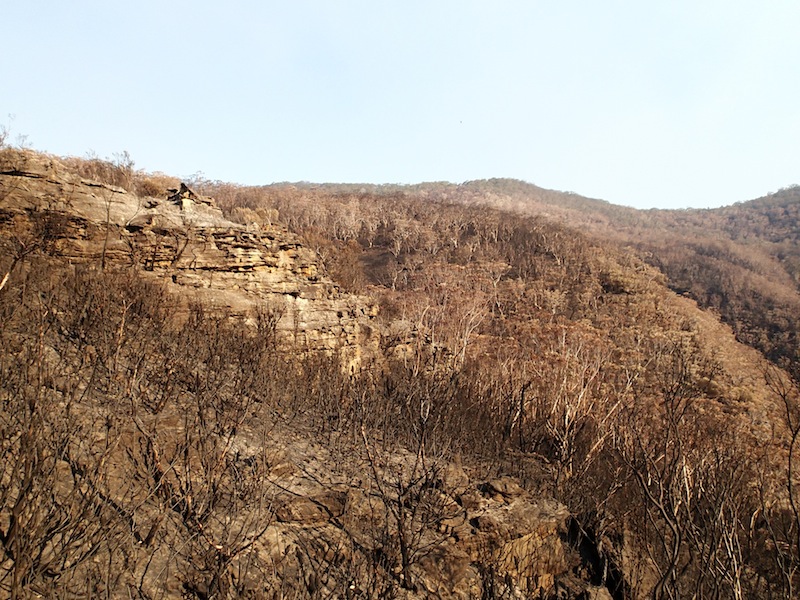
This summer looks like being a good time to go further afield and do some of the canyons you’ve not made it to thus far. Kanangra should reopen soon. Newnes and Glen Davis also offer some great opportunities far from the fires.
World-class canyons like Surefire (which scares people off with its long walk-in) suddenly become more appealing. And then there’s Bungonia or Macquarie Pass down south, so there’s still more than enough canyons to still keep us all busy over summer!
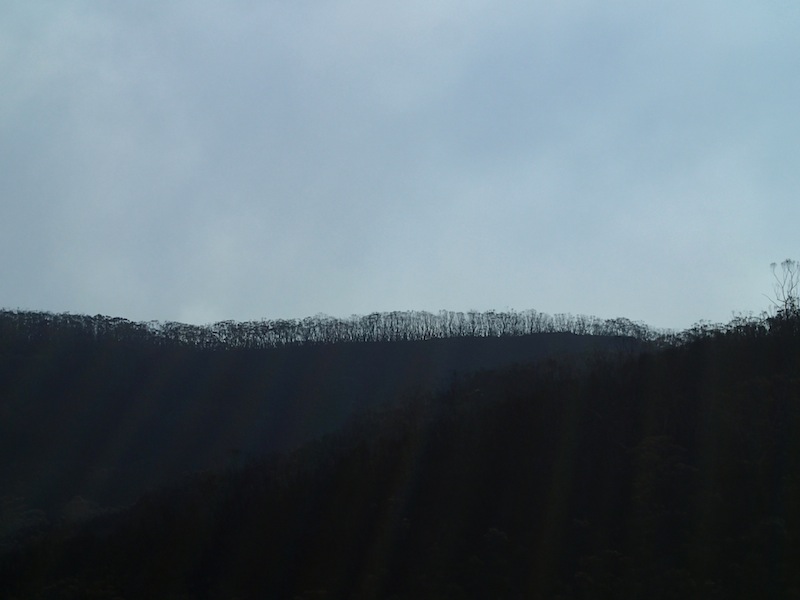
Canyoners helping with restoring tracks and access:
I have sent a message to the local NPWS ranger who manages most of the burnt canyons, particularly the popular ones around Mt Wilson and on the Newnes Plateau.
I have suggested that recreational canyoners might be able to help out with some sort of “working bee” in the coming months to restore some of the tracks and other access points to canyons in the burnt region.
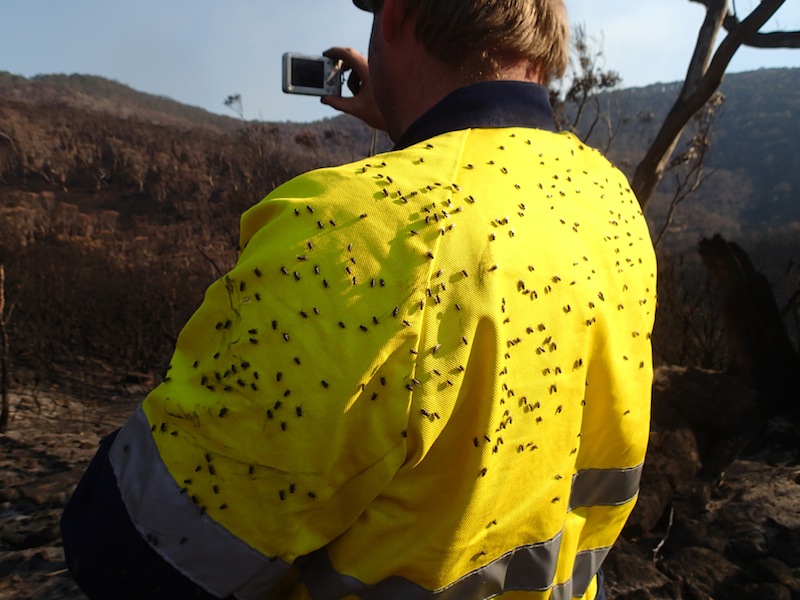
In particular, this could be useful for the Wollangambe Canyons, which copped the brunt of the fires. Given these are the most commonly accessed canyons, especially by less experienced groups, the tracks are obviously well used and integral to safe access.
The climbing community does a lot of similar work, in conjunction with Blue Mountains City Council and NPWS (such as Crag Care). I’d be very surprised if there wasn’t strong support from the canyoning community for similar efforts here (I’ve already been contacted by several people saying they’d be really keen to help).

It wouldn’t just be about restoring access. Dealing with drainage and potential erosion issues, dangerous trees and branches, stopping damage to sensitive areas, as well as ensuring a plethora of new tracks don’t form, will all help improve the local environment and make future canyoning activities more sustainable.
In fact, ensuring the tracks in the area go back in an appropriate, environmentally sensitive manner, will be on the NPWS “to-do list” anyway, so why not bring in some free labour from people who know and love this area! Plus fixing the tracks could speed up the reopening of the area.
I’ll make sure I update people if we make any progress on this “working bee” idea.

